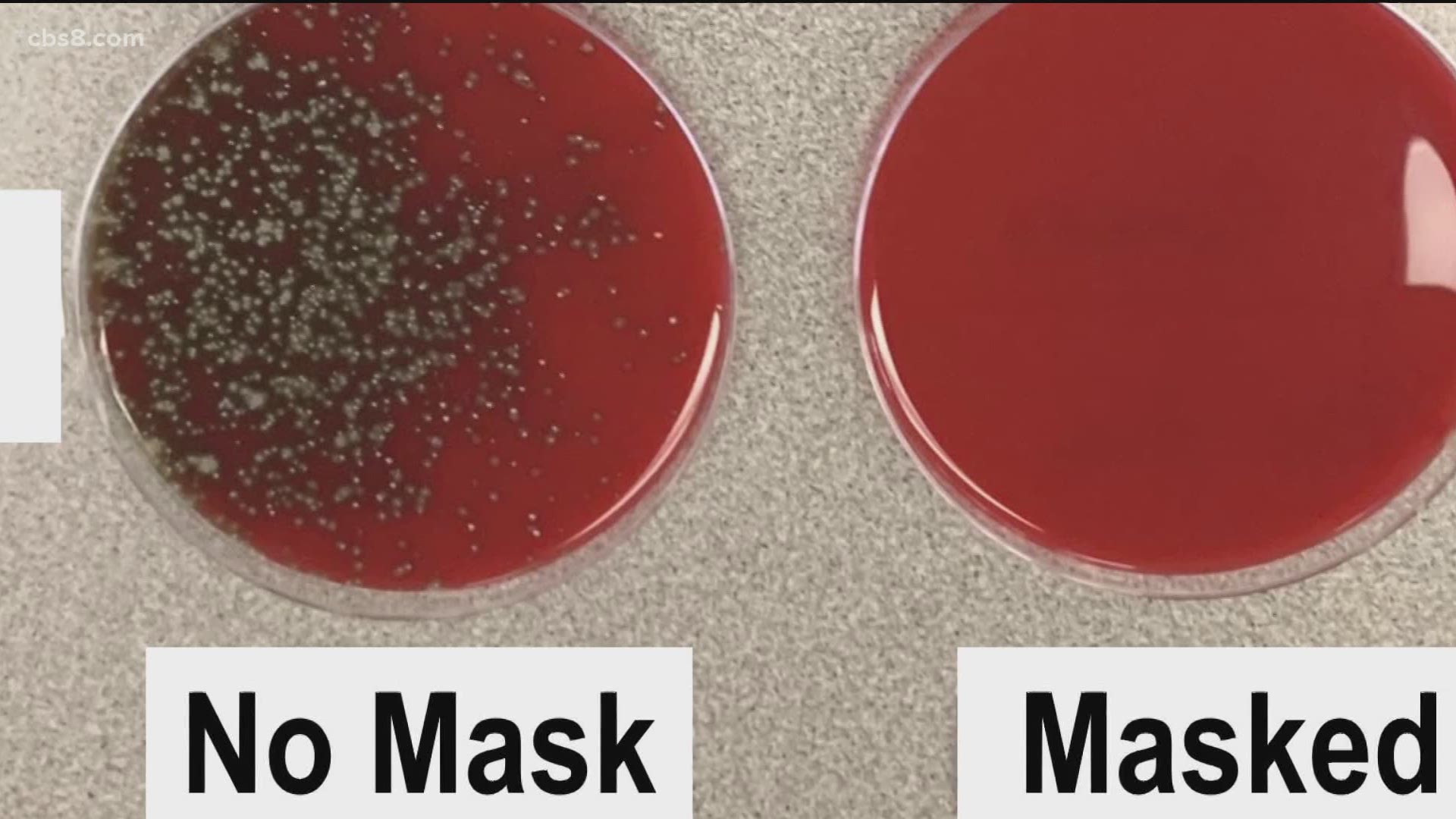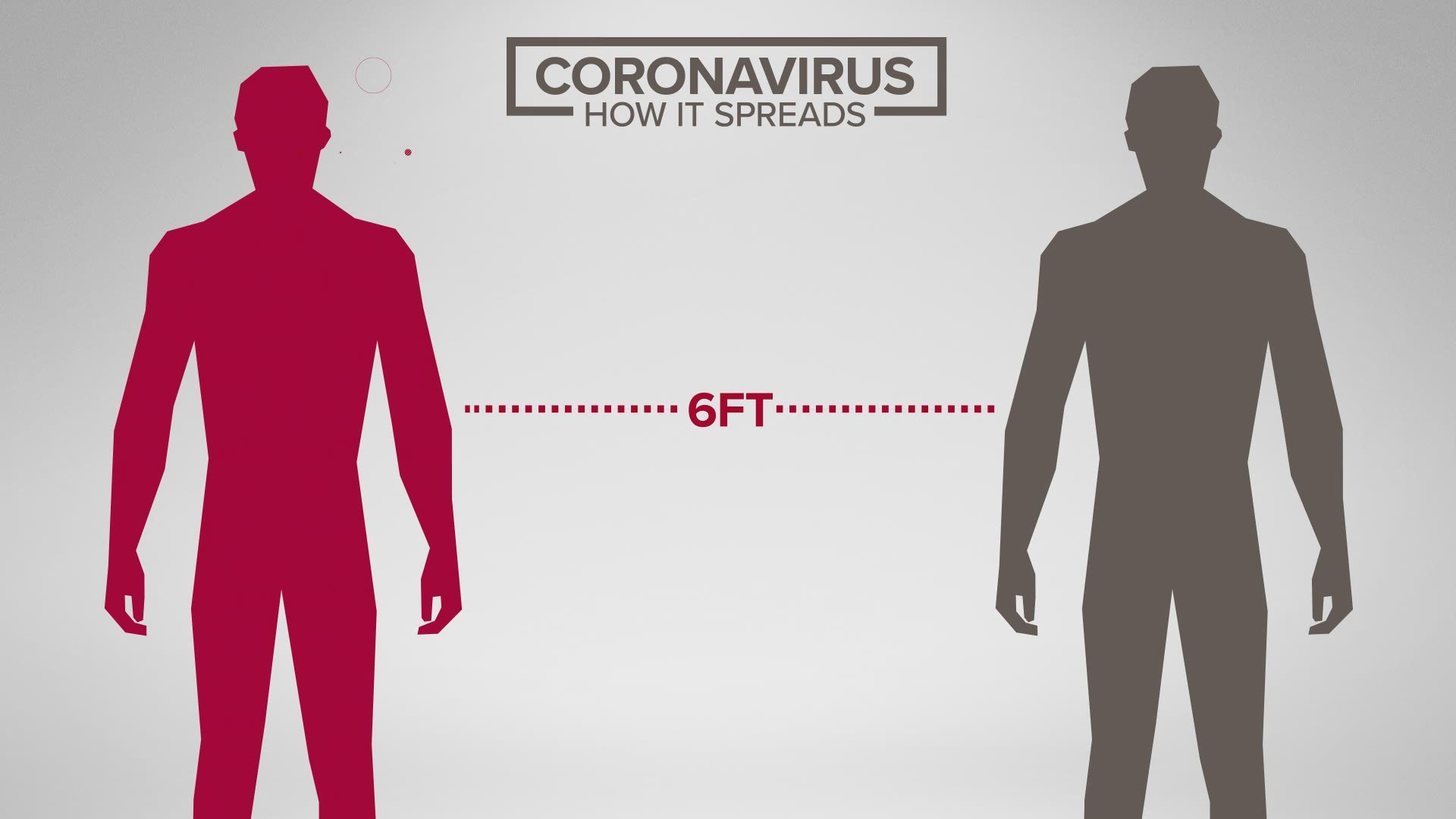Some people have questions about how effective masks or face coverings are in slowing the spread of coronavirus (COVID-19). One microbiologist is putting them to the test.
"These are bacteria culture plates that we use everyday in micro biology lab," said Rich Davis, Ph.D, Clinical Microbiology Lab Director at Providence Sacred Heart.
Davis coughs, talks, sings and sneezes in to culture plates without a mask on and with a mask on, indoors. He uses bacteria to demonstrate how much respiratory droplets can spread without a mask on.
The pictures illustrate his findings.
The bacteria colonies show where droplets landed and a mask blocks virtually all of them.
"There was one little colony of bacteria that made it all the way out of the full six feet," said Davis.
What about social distancing? Davis did the demonstration again from two feet away, four feet away and six feet away.
A mask blocked nearly all droplets from each distance.
"There was a droplet that ended up on the two-foot plate even when wearing a mask," said Davis.
He said these cultures show bacteria and not viruses, but they give a clear visual of what surgical masks can do.
"There's going to be a difference in what you put out there when you wear a mask vs. when you don't wear a mask," added Davis.
"Bacteria are already present in my mouth/throat and are simple to grow in culture and visualize. The best evidence we have suggests that large respiratory droplets containing SARS-CoV-2 are the primary means of spreading COVID-19. I try to be very clear that what I did here is not how you culture virus in the lab (which is a very specialized procedure few clinical laboratories can do). Even if it were, I’m just an n of 1 (and I don’t have COVID-19)," added Davis.
So, wearing a face covering is a lot like wearing a seat belt.
"The bacteria serve as a proxy to show what behaviors transmit large droplets, the kind more sophisticated methods and epidemiological data indicate mostly transmit SARS-CoV-2. Even though individual viruses are many magnitudes smaller than individual bacteria, large droplets are what most respiratory viruses are contained in and these are blocked by masks," said Davis.


